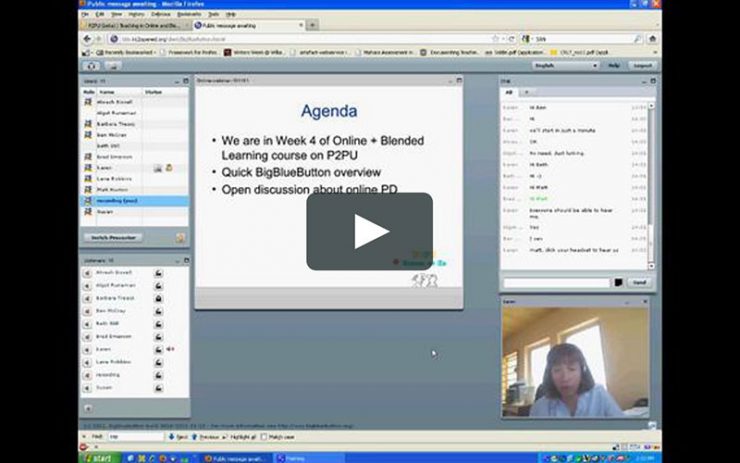Sharmistha Sengupta, a class 8 physics teacher in a Delhi school, got a tad worried when she received a notification from her school principal that she would have to conduct her classes online. Senpupta had never conducted an online course before, and is a bit technologically-challenged. She is among thousands of similarly challenged teachers who have been thrown the challenge of taking classes online for a length of period that’s fairly uncertain.
As schools across the country and the world pivot online on very short notice, academicians are finding the going a bit tough due to a variety of complications – from app configurations to internet access to working out the tech part.
While some faculty members already had competencies in online or remote teaching in four areas – live streaming, pre-recorded teaching sessions, facilitating discussions in a digital platform and providing assessment and receiving feedback – much background preparation still had to be done to get academic staff, students and infrastructure ready for lessons to transition seamlessly into online learning.
Also, we are living in an unprecedented time. Recognising that both teachers and students are human and that they will have to reach middle ground is very important. The idea of being able to just port what you’re doing in a classroom into an online environment has its own challenges. But trying to do that in the midst of a pandemic is another problem altogether given that everyone’s freaked out and not in the right frame of mind. It may not be realistic to think that students can just show up and start taking class at the same time every day in an online environment.
While many schools talk about embracing technology-enhanced learning, it was a different story when all classes of more than 50 students had to be converted to e-learning in the middle of the semester. At the back of their minds, they were also ready for full e-learning to take place if the situation worsened, but the reality was different.
How should schools proceed then?
May Lim, an associate professor at the Singapore Institute of Technology (SIT) and director of the Centre for Learning Environment and Assessment Development, shares how her institute managed to deal with the situation and offers some tips:
A consistent, wholesome approach
While flexibility was needed to ensure different learning outcomes could be achieved in different programmes, consistency across the school was important in this time of crisis.
- Across SIT, all classes with more than 50 students switched to online learning. Any classes that needed to remain face-to-face, such as laboratory sessions, were broken into smaller groups.
- Licences or access to technology such as Zoom, Respondus and Microsoft Teams was made available to all teaching staff and students. It allowed lecturers to choose what worked best for them and their students. It also allowed training and guides to be provided based on the key tools that were available. The key tools provided some consistency so that students were neither confused nor rushed into learning different tools.
Ensuring learning outcomes were uncompromised
Flexibility while ensuring accountability was important. As certain assessments could no longer take place as planned, alternative methods were needed to assess the same learning outcomes.
- A policy was written up to introduce flexibility with faster approval routes for changes that were needed. This ensured that all assessment changes were reasonable and fair.
- It was emphasised that online platforms were to be viewed as learning environments, like classrooms and lecture theatres, that enabled effective learning to take place.
- Many academic staff chose to conduct live streaming classes and attempted to use polls and quizzes to engage learners. Many academic staff were doing live streaming for the first time, but they were willing to take the risks and, in return, received compliments for the positive learning outcomes.
Remaining student-centric
Since there were students who had contact with Covid-19 patients, it was important to consider the ones who could not participate.
- SIT communicated its stance that students who were on a leave of absence or under quarantine orders were to be supported with alternative learning plans.
- Instead of expecting them to catch up with their classmates on what they had missed, teaching staff made arrangements to ensure they could receive the learning content and have questions answered. It was important to ensure that they were not missing out on learning. Having technology on hand to allow them to participate in discussions whenever possible helped.
- While the assumption is that most students have a laptop to do e-learning, there is always a small number who don’t. Arrangements were made for students to borrow laptops. This ensured that no one was left behind in the transition from face-to-face to e-learning.
Having clear, frequent communication
It was key to understand concerns at different points in time.
- Students’ feedback was taken and communicated to all teaching staff. Common concerns included effectiveness of online lectures, changes in assessment, and self-discipline when learning online.
- The institute did pulse checking through student management committees two weeks after the online replacement of all large classes. This enabled further tweaks to improve the experience. Online meetings were conducted with programme directors and teaching staff to share experiences and rectify common mistakes that were made.
- More communication channels were important, ensuring that despite not physically seeing each other, concerns and experiences were shared. The feeling that “we are in this together”, or “if I make a mistake in the online learning platform, I am not the only one”, helped to support everyone in the journey.
- It was also important to check in with students with special needs, as well as those who were academically weak, to see if they were transitioning smoothly into a different mode of learning.
Making training available in all shapes and sizes
Many types of training for lecturers too to provide online learning.
- The topics covered how to create narrated slides, how to run effective live streaming classes, how to design alternative assessments, and the use of online proctoring tools for assessments.
- Apart from teaching staff who needed training, students were also provided with guides to use the tools, and on getting themselves ready to learn in an online environment.
- Academic advisers also spent time talking to students about topics such as time management, managing procrastination and recognising that the online learning environment could be distracting for some students.
Keeping in mind technology challenges
It takes extra skills and effort to ensure that whatever is communicated in the physical environment is clearly articulated to those at home.
- If the staff is walking around and taking the class, a good portable microphone is important because audio is extremely important in an online class.
- Presetting certain features in online learning tools can help prevent some nightmares. Zoom, for example, has features that can be preset, such as auto-mute upon entry or auto-record. Common mistakes reported include students coming into live streaming sessions with private chats streamed for all to hear or running a session and forgetting to record it.
Compassion is key
Some digital learning experts have some surprising advice: do less. ‘Please Do A Bad Job Of Putting Your Courses Online’ is the title of one popular blog post by Rebecca Barrett-Fox, an assistant professor of sociology at Arkansas State University. Her point: “your class is not the highest priority of their or your life right now.” She suggests not requiring students to show up online at a particular time and making all exams open-book and open-Internet.
With social distancing measures in place, the world is also discovering the joys of online teaching and learning, and improving pain points along the way. Staying united and learning together through times of crisis is the need of the hour.


















